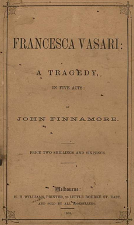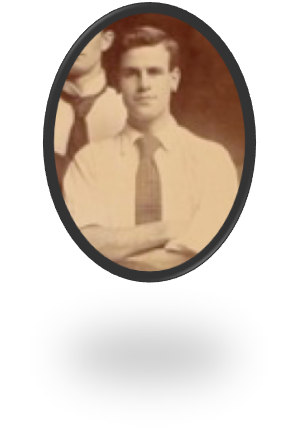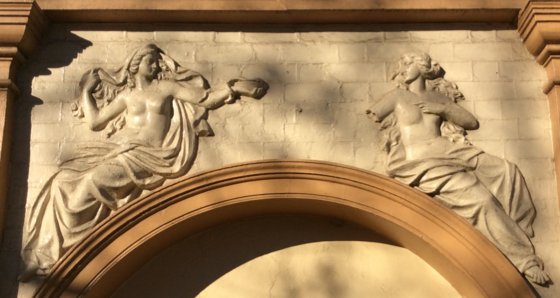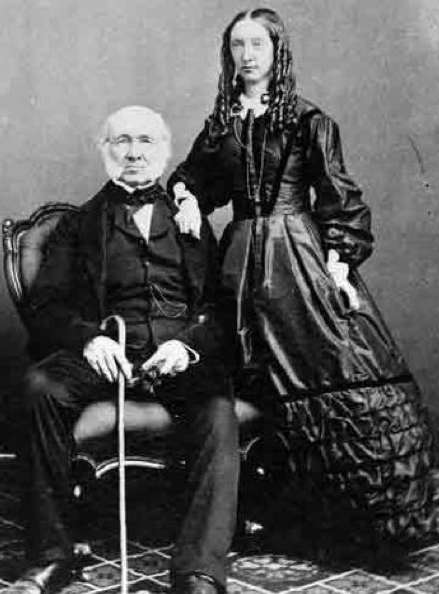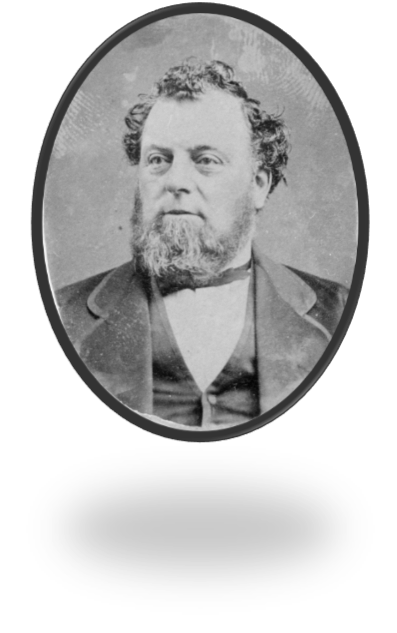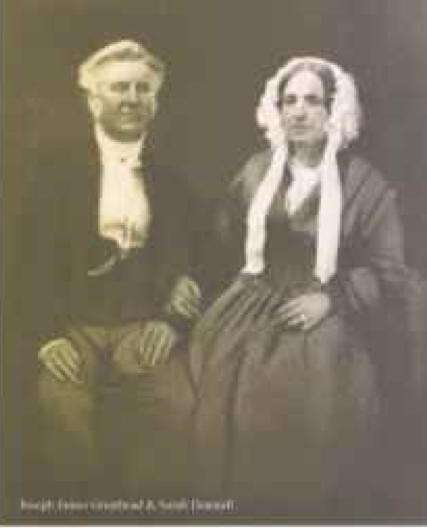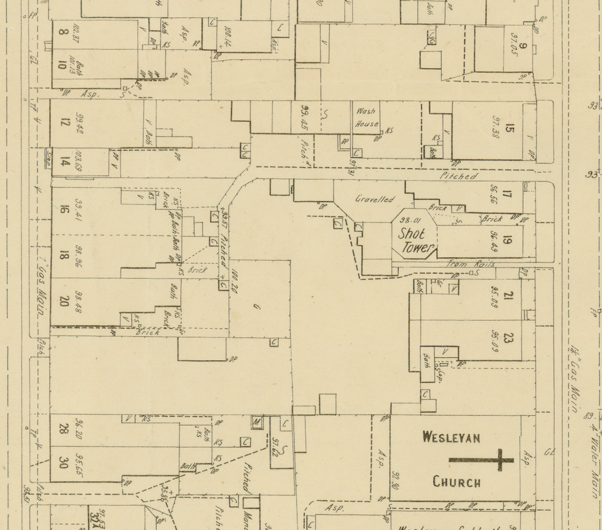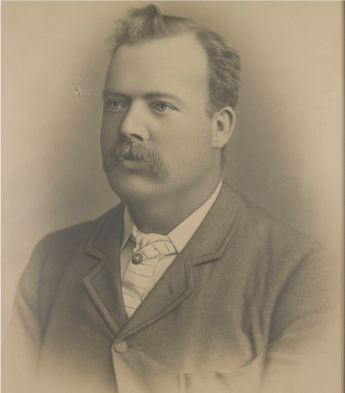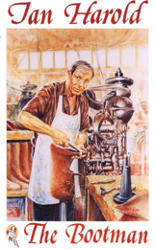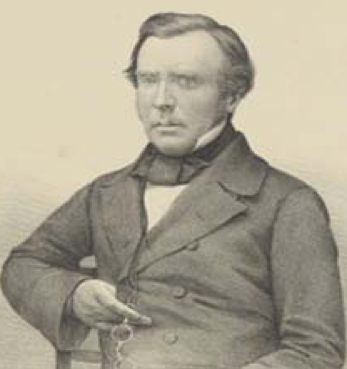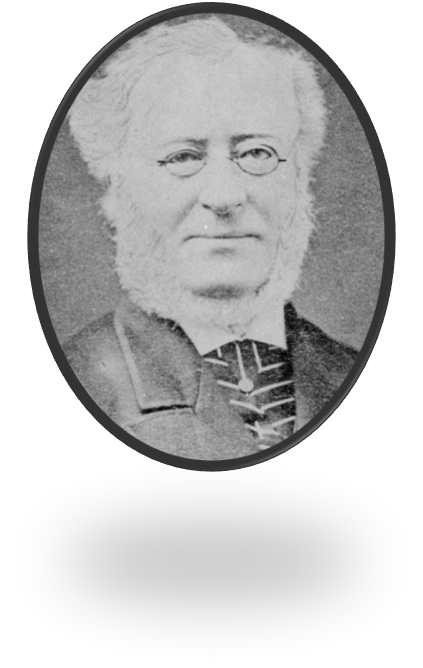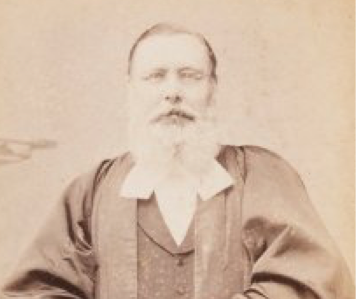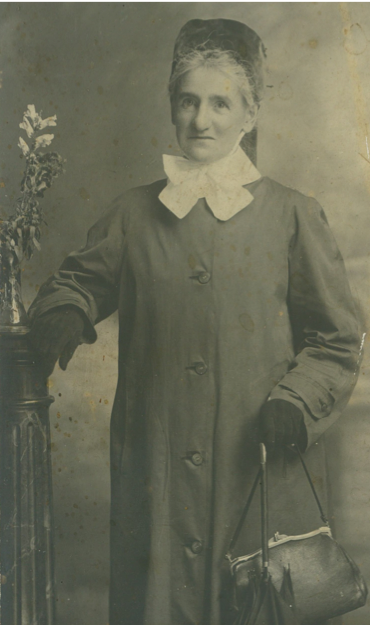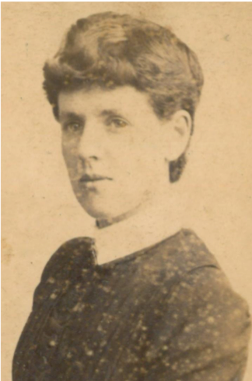Collingwood Notables Database
John Finnamore
c. 1843 - 1899
Playwright, actor, stage director, law clerk, author
Irish-born John Finnamore arrived in Australia in 1860 as a young man of 17 and quickly established himself in the theatre world, both as an actor and the first person to write and publish an original tragedy in Victoria. Apart from a brief interlude in Colac in the late 1870s, he resided in Collingwood and district for much of his life, marrying at St Philip’s Church in Hoddle Street in 1865. His descendants by the name of Arrowsmith continued to live in Collingwood into the middle of the twentieth century.
Robert Flockhart
c. 1830-1870
Tanner and currier, councillor
Flockhart was a Scottish-born Protectionist industrialist. Like many like-minded men of industry, he saw the banks of the Yarra in Abbotsford as a profitable place to establish an industry that relied on a copious supply of running water. Flockhart Street Abbotsford was named in his honour.
Charles Gabriel
1879-1963
Chemist, conchologist, naturalist
Son of Joseph Gabriel, a chemist, and Elizabeth Baker, daughter of well-known Anglican layman Charles Baker, Charles Gabriel followed his father’s footsteps in the pharmacy profession as well as his interest in natural history.
Joseph Gabriel
c. 1847-1922
Chemist, naturalist
Joseph Gabriel was a Victoria Street chemist who devoted his spare time to the study of natural history, becoming a noted amateur naturalist. He was an early member and office-bearer of the Field Naturalists' Club of Victoria and an honorary collector for the National Museum of Victoria; his reports on marine expeditions to the Bass Strait islands were a major part of the twenty-one papers he published in the Victorian Naturalist. He was a committee member of the Microscopical Society of Victoria.
John Alexander Gilfillan
1793-1864
Artist
Richard Goldsbrough
1821-1886
Woolbroker
Richard Goldsbrough was a bluff and hearty Yorkshireman who became a leading woolbroker in Melbourne. He played an important role in the development of Australian wool-broking practices and his name lived on in the name of the well-known company Goldsbrough Mort and Co (later Elders Ltd) and their distinctive wool stores. His residential property TheRest bordered the Yarra at Abbotsford.
James Graham
1819-1898
Merchant, early settler, Member of Parliament
James Graham was among the first European people to live in Collingwood. He lived in a hut on land owned by JDL Campbell near Dight’s Falls on the banks of the Yarra, and supervised the building of his house Campbellfield. His copious letters and the records of his business dealings provide details about personal and commercial life in Melbourne from 1839.
Joseph James Greathead
1798-1877
Chemist, missionary, teacher
Greathead arrived in Melbourne on the Diana in 1853, accompanied by his wife and four of his children. As a trained chemist, he acted as the ship’s surgeon on the voyage. In the mid 1850s Greathead worked for the Melbourne City Mission as a missionary in Collingwood. The Mission was established in 1854 by Mrs Hester Hornbrook and Dr John Singleton as an interdenominational mission to the poor. Greathead’s Journal of the Collingwood Flat District for the City of Melbourne Missionary Society, 2 Oct 1854-29 June 1856 gives a detailed account of his work and includes statistical reports to the committee. The journal revealed among other information how few children were attending either day school or Sunday school, which inspired Mrs Hornbrook to establish Ragged Schools for children who due to poverty were unable to attend ordinary schools. It also revealed Greathead as vehemently anti-Irish and anti-Catholic.
Eugen Louis Hamel
c. 1827-1900
Lead shot maker
John Hancock
1846-1899
Compositor, trade unionist, Member of Parliament
Born in the London district of Clerkenwell, Hancock was a compositor who migrated to Melbourne in 1884 with his wife Charlotte and their children. He had been influenced early in life by Chartism, especially under the tutelage of his teacher Mr Tuck, and in Australia became interested in the possibilities of working-class representation in Parliament. While no firebrand, his wide experience led to his becoming the Secretary of the Typographical Society and President of the Trades Hall. In January 1890 he was elected to the council of the Working Men’s College (later RMIT).
Ian Alexander Harold
1938 - 2020
Boot manufacturer
The City of Collingwood has been famous as the capital of the Australia’s boot and shoe manufacturing from the late 19th until well into the 20th century and was the location of many dozens of footwear factories and associated industries. Ian Harold’s claim to fame includes his perseverance – and humour – in keeping the last of Collingwood’s old style boot factories in production while all the others closed around him. The Harold Boot Factory, started by Ian’s grandfather Frederick, eventually left 205 Gipps St Abbotsford to move to Fairfield in 2008. Ian’s lineage is also extraordinary in that Harold Boot Company claim a family history of boot making dating back to the 1400s in Leicestershire, England where Ian Harold's ancestors were bespoke boot makers.
Isaac Hart
1820-1899
Importer and commercial agent
Isaac Hart lived in Collingwood for over thirty years, was appointed a Justice of the Peace in 1870 and took an interest in the Collingwood School of Design. He was a well-known Melbourne identity as a founding member of the Melbourne Hebrew Congregation, a committee member of the Board of Education, a board member of the Metropolitan Gas Company, and a trustee of the Melbourne General Cemetery. In the last role he was very active in the establishment and development of the Jewish section of the cemetery.
James Bond Hayman
c. 1832-1892
Tanner, currier, leather cutter
Hayman was one of a number of men who saw the banks of the Yarra in Abbotsford as a suitable place to establish an industry that relied on a copious supply of running water, and access to a refuse drain. Also like many others in the nineteenth century, he did not shy away from his noxious trade, but lived right next door to the Grosvenor Tannery with his family. His daughter married one of the tannery employees.
John Hodgson
1799-1860
Merchant, early settler, horse breeder, land subdivider, Mayor of Melbourne, Member of Parliament
John Hodgson was a merchant who purchased large landholdings in Collingwood in the 1840s. He was the first owner of St Helier’s in Abbotsford, and was thus one of Collingwood’s earliest European inhabitants, before selling the property to Edward Curr in 1842. He was the original owner of the Studley Arms Hotel in Wellington Street, was Mayor of Melbourne from 1853 to 1854, and a member of the Legislative Council from 1853 to 1860.
William Douthwaite Holgate
1856-1939
Auctioneer, councillor, mayor
W D Holgate was a driving force in the improvement of Clifton Hill in the 1880s, agitating for a railway service, a post office and a police station, building the Albert Hall, and establishing the Clifton Hill Literary Association before being elected to Collingwood council. He did not neglect his own financial welfare, making the most of the boom years for buying and selling property both as an agent and in his own right. He appears to have been a dynamic livewire with a wide range of interests, capable of switching from one career path to another without slowing pace.
George Horne
1860-1927
Doctor, surgeon, amateur ethnographer, amateur ornithologist
George Horne was a doctor in Queens Parade Clifton Hill and a surgeon at the Women’s Hospital. As well as his busy professional life he immersed himself in studying Aboriginal life and customs, and amassed a significant collection of stone implements and weapons. His book Savage life in Central Australia was regarded as a notable addition to the scientific literature of Australia. Natural history, especially the study of birds, was another of his passions. His obituary described him as ‘a notable figure in the medical and intellectual life of the city’.
Robert Hurst
1830-1895
Bootmaker
Robert Hurst was a successful bootmaker, unusual in that he not only manufactured and imported boots and shoes, but sold them in his own shops. The number one shop was in Smith Street on the corner of Peel Street (demolished) and he had shops in many other suburbs and the city as well as Ballarat and Geelong.
Charles Hutton
c. 1809-1879
Landowner, subdivider, early settler, pastoralist
Evangeline Florence Ireland (Sister Faith)
1866 - 1926
Methodist Sister, welfare worker
Richard Papworth Kefford
1832-1901
Carrier
Richard Kefford was the eldest child of a fishmonger in London’s East End. From these humble beginnings the family migrated to Australia where his father became a successful farmer in Nunawading and Richard junior’s entrepreneurial spirit brought him success and led to the founding of a transport empire.
Nathaniel Kinsman
1823-1898
Lay preacher, marriage celebrant, auctioneer
Yorkshire-born Nathaniel Kinsman and his wife Lydia came to Victoria in 1849. After working as an assessor for Melbourne City Council, he set up his own business in Fitzroy. He was at first connected with St Mark’s Anglican Church in Fitzroy, and became associated with the new East Collingwood congregation, eventually known as St Philip’s. There he conducted lay services until he seceded to form the Victorian Free Church of England. He was to become known as ‘The Marrying Vicar’, reportedly officiating at more than 7000 marriages.
Maximilian Ludwig Kreitmayer
1830-1906
Councillor, mayor, waxworks proprietor, modeller
Grandly named Maximilian Ludwig Kreitmayer was an extraordinary and talented fellow who ran a famous waxworks museum, lived in St Helier’s Street Abbotsford from 1880 until his death, and was a Collingwood councillor from 1887 (Mayor 92-93). He was described in Our local men of the times as a convivial spirit possessing ‘never-tiring energy and fertile originality’. Among his intimate associates ‘his large-heartedness and pleasant ways made him a respected and conscientious friend’.
Harriett Kreitmayer
1849 - 1934
Waxworks proprietor, philanthropist, picture house proprietor
Harriet Watts married Maximilian Ludwig Kreitmayer, a waxworks modeller, in 1884 and moved into Home Lodge in St Helier’s Street Abbotsford, where three children were born to the couple. Harriett was involved with various philanthropic activities in Collingwood, filled the role of Mayoress during Max’s council term, and took over management of the famous waxworks after his death in 1906.
Violet St Clare Langley
1856-1938
Nurse, teacher
Always formally referred to as Miss Langley throughout her employment, Violet St Clare Langley was matron of the Collingwood Crèche for nine years, from 1889 until 1898. The Crèche was established by the Reverend Dr Charles Strong and his wife Janet to provide a safe affordable place for poor working women of Collingwood to leave their children to be cared for. Matron Langley, known in family circles as Clare or Clara, lived in and had a long working day.
Laura Lydia (Dorothy) Langley
1860-1927
Teacher, nurse, welfare worker
Laura Langley resided only briefly in Collingwood at the time of the 1890s recession, but she played an active role there as an agent of the Australian Church. Working with the Church’s Social Improvement Society, which had been established by the Reverend Charles Strong, her role included managing a receiving house for neglected children. The principal object of the society was ‘by lectures, visiting among the poor and sick, care for neglected children, social meetings and every other means in its power — to improve the social condition of the poor’.

